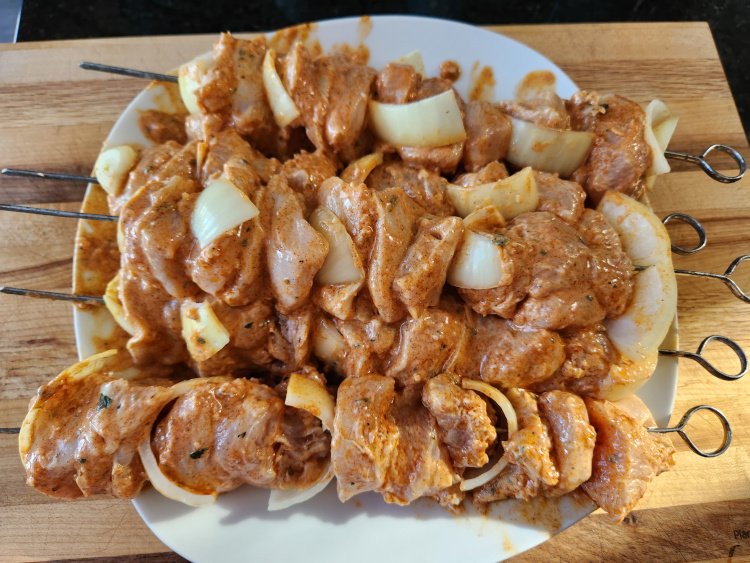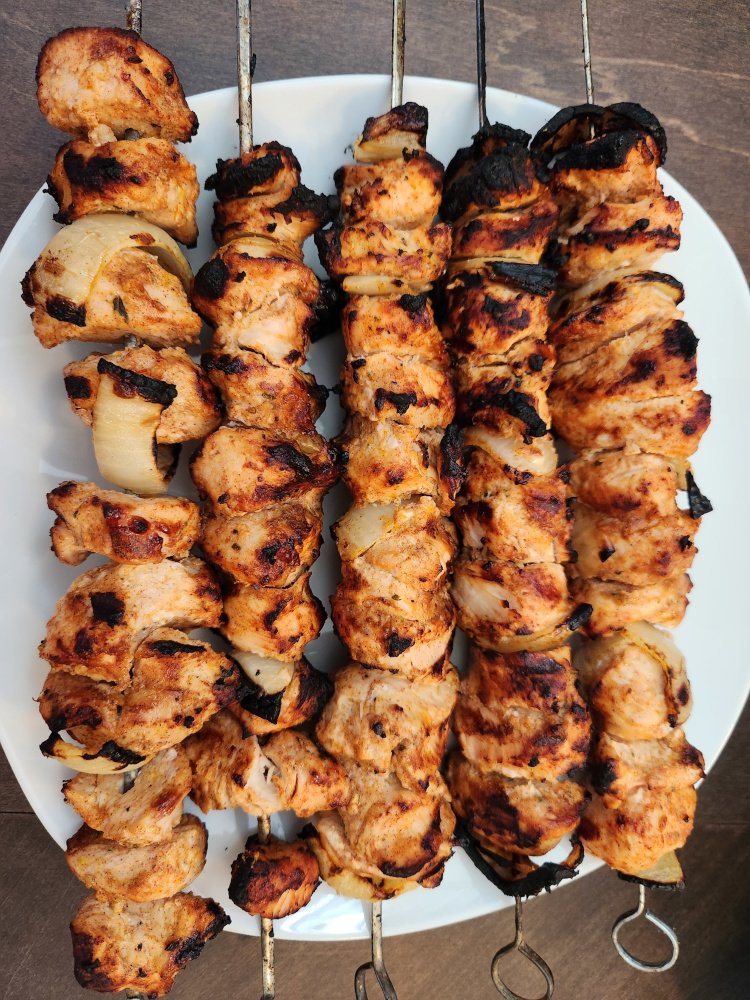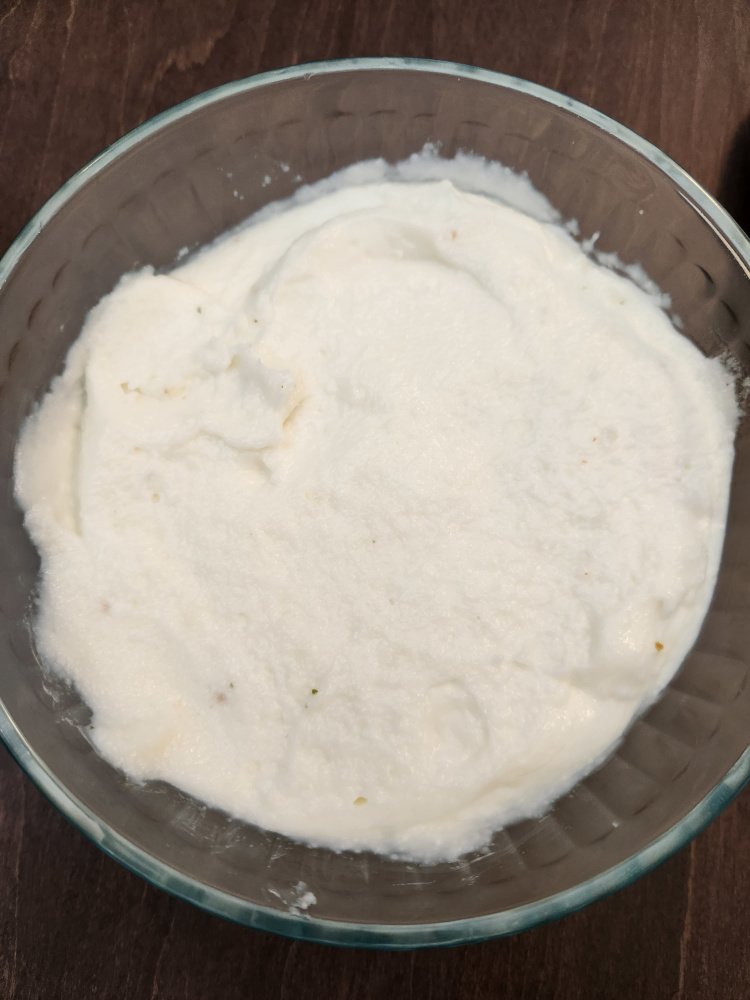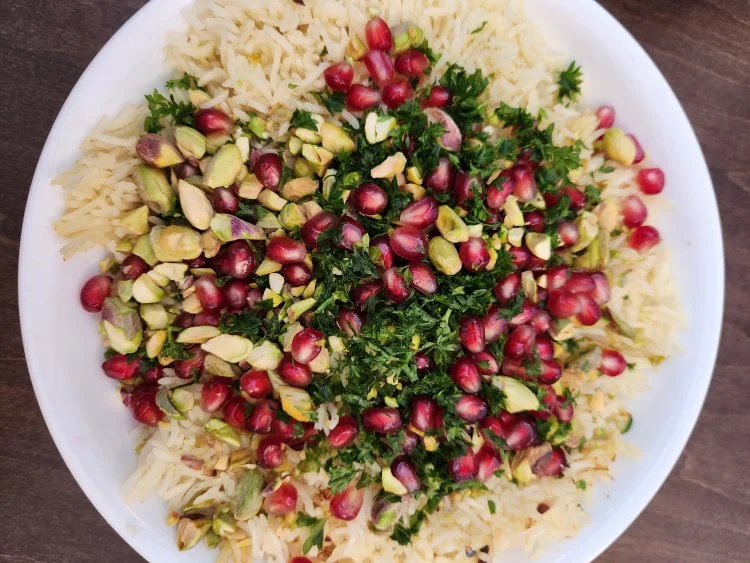Exploring Authentic Middle Eastern Food
As we’ve mentioned before, we’re from a small town. The craziest thing we usually ate growing up was white people taco night. Then we moved to the big city and realized that there were so many interesting cuisines to eat. Making authentic Mexican food for friends was a huge success, so we decided to do that again but this time make a Middle Eastern feast!
We’ll walk you through the 5 recipes we made, so you can make them too! They’re not hard to make and they use (mostly) common ingredients.
Disclaimer: The term “Middle East” is, at best, poorly defined. It would be impossible for us to do an accurate sampling of Middle Eastern cuisine in one blog post with all the different dishes from over a dozen different countries. So we decided to sample a small handful of dishes that could be considered a stepping stone to the wider world of Middle Eastern cuisine.
Za’atar Feta Flatbread with Eggplant Dip
What the heading says.
Flatbread Ingredients:
1 russet potato (about 227g)
1 teaspoon active dry yeast
3 ¼ cup all purpose flour
¼ cup and 2 tablespoons extra virgin olive oil
2 teaspoons diamond crystal kosher salt
¼ cup za’atar
227g crumbled feta cheese
Eggplant Dip Ingredients:
2 large eggplants (454g each)
1 cup labneh or plain greek yogurt
½ cup chopped parsley
2 tablespoons lemon juice
1 garlic clove
2 teaspoons kosher salt
½ teaspoon ground cumin
¼ cup extra virgin olive oil
½ teaspoon smoked paprika
This dish is a labor of love, but it is so, so worth it. Yes, you can buy flatbread, but making it yourself is just *chefs kiss*. (Is there anything better than fresh bread?)
We followed Claire Saffitz’s recipe from her cookbook Dessert Person. We’re not going to walk you through step-by-step how to make the flatbread (we’re phoning it home a bit here). Instead, we recommend watching this video of Claire outlining the process.
Yup, go watch the video. Some things are better watched instead of reading — this is one of those things. (Also we did not take pictures of the flatbread stuffing process which Claire dedicates 9 step-by-step pictures to in her cookbook.)
Just trust us when we say: it’s a lot of steps, but it’s not particularly hard.
Your effort will be rewarded!
Sidenote: For the za'atar, we used a Jordanian blend — there are other blends which are slightly different (Lebanese, Aleppo, etc.) Claire didn’t specify which type of za’atar to use in her recipe, but if you want to learn the differences and pick one based on your tastes, read this article to learn about the ingredients in the regional spin offs.
The eggplant dip is also super simple to make — just roast your eggplants (we did ours on the barbeque), scoop out the flesh, and add the rest of the ingredients to a food processor to blend it into a delightful dip.
Shish Taouk
Skewered chicken marinated in yogurt and spices.
Ingredients:
2 pounds boneless skinless chicken breast cut into large chunks
½ cup plain whole milk yogurt
¼ cup lemon juice
¼ cup olive oil
6 garlic cloves crushed
1 tablespoon tomato paste
1 teaspoon paprika
¾ teaspoon cinnamon
½ teaspoon oregano
½ teaspoon ground ginger
1 teaspoon salt
¼ teaspoon black pepper
Making Shish Taouk is pretty simple. Mix all of the ingredients in a bowl (or freezer bag) and then put the chicken in. Let the whole thing marinate for at least 4 hours, but ideally overnight. Then take the chicken out, skewer the pieces, and cook them. (We also added some onion to our skewers, this is optional but recommended.) We grilled our skewers on a BBQ, but you can also use a grill pan, or bake them in the oven if you want. Super easy.
When we made this recipe, we only had time to marinade the chicken for a few hours and the result wasn’t anything to write home about. Next time we make this, we’d probably try overnight to see if it helps any.
Toum
Lebanese garlic sauce.
Ingredients:
1 cup peeled garlic cloves
2 tsp salt
3 cups neutral oil (we used canola oil)
½ cup lemon juice
Have you ever wanted to eat a bunch of oil and garlic? Then this sauce is just for you. It’s also super simple to make if you have a food processor. The most annoying part is forcing yourself to slow down and add things slowly.
The whole sauce is one giant emulsion — a combination of two liquids that don’t mix. In this case, the two liquids are oil and lemon juice. The garlic acts to stabilize the mixture allowing the sauce to become thicc, spreadable, and fluffy.
To start, add your garlic to the food processor and pulse until it’s been finely minced.Once the garlic has been minced, slowly add a few tablespoons of oil. Make sure to stop and scrape the garlic/oil paste down from the sides of the food processor. Keep slowly adding oil one tablespoon at a time until a creamy sauce starts to form.
Then it’s time to start alternating between oil and lemon juice. Slowly add some oil. Slowly add some lemon juice, wait a bit for everything to get mixed together. Slowly add some more oil. Slowly add another splash of lemon juice. Wait. Keep repeating until you’re out of oil and lemon juice.
The recipe says it should take about 15 minutes, and at first, we thought they were joking. It turns out no, it does actually take about 15 minutes of slowly pouring liquids.
The result is a super creamy, super fluffy, very garlicky sauce that is perfect for dipping meat into.🤤
Mediocre Tip: When we say slowly add the oil and lemon juice, we mean it. Drizzle it like it's 1930 and you’re trying to not waste any food.
Fattoush
Lebanese salad with fried pita, vegetables, with a sumac dressing.
Salad Ingredients:
1 head of romaine lettuce, chopped
2 roma tomatoes, diced
1 cucumber*, quartered
1 green pepper, chopped
5 radishes, diced
2 green onions, chopped
¼ parsley, chopped
2-3 pitas (for frying)
Dressing Ingredients:
3 tablespoons olive oil
2 tablespoons lemon juice
2 garlic cloves, grated
1 teaspoon sumac
1 teaspoon pomegranate molasses**
½ teaspoon dried mint***
Salt and pepper to taste
*We used one English cucumber, but if you can find Persian cucumbers, get ‘em.
**We couldn’t find this, so we made our own.
***Another thing we couldn’t find, but thankfully we had some from Brittany’s garden that she had dehydrated!
You can’t fuck up a salad. 🥗
But you can fuck up making pomegranate molasses. We did. We simmered our pomegranate juice for too long. Don’t be like us.
Oh, you can also fuck up frying pita bread. We didn’t do this, thankfully. We used ghee, but you could also use olive oil. You just wanna cut up your pita and fry it until it’s nice and crisp. It’s essentially a flat crouton.
Pre-salad assembly, to ensure nothing gets soggy.
Jeweled Rice
Saffron rice with pomegranate, nuts, and parsley.
Ingredients:
2 cups of basmati rice
2 cups of chicken stock*
½ tsp of saffron threads
½ cup of pomegranate arils
¼ cup of shelled pistachios, roughly chopped
¼ cup of chopped parsley
*Whatever amount takes you to the two cup line on your rice cooker.
When we think about saffron rice, we immediately think of Indian food first. While doing research for this post, we stumbled across saffron rice in Middle Eastern cuisine and found images of rice with pomegranate arils and nuts — it looked so pretty! There are many recipes for “jeweled rice” out there — this one is super simple, but you can go more complex and include chopped dates or raisins, almonds or pine nuts instead of pistachios, and add a variety of spices. We opted to do a simple rice dish because we were making a lot of other dishes.
For this recipe, you need to bloom your saffron in some warm water for a bit. Then add the saffron, rice, and chicken stock to your rice cooker. Our stock was pretty salty, so we didn’t add any additional salt, but if yours isn’t super salty, feel free to add ½ teaspoon. Then all you have to do is chop your parsley, shell pistachios (easier said than done) and chop them, and then deseed a pomegranate. You’ll have some tasty arils leftover for a snack!
🔪 Mediocre Tip: To deseed a pomegranate, you’ll want to cut the top and then score it down the sides (don’t go super deep). Then you’ll gently split apart the pomegranate into chunks, and smack it with a wooden spoon to get the arils to fall out (do this over a bowl of water). If you have some stubborn seeds, put the piece in the water and gently pry them out. Doing it with a bowl of water results in less red stains! For a good visual, watch this video.
When the rice is done, transfer it to a nice serving bowl and top it with your pomegranate seeds, chopped pistachios, and chopped parsley. Congrats, you just made a dish that looks and tastes 💯.
Maamoul Cookies
Semolina based shortbread cookies with date filling.
Ingredients:
2 cups (350g) semolina
1 cup (125g) all purpose flour
½ tablespoon ground mahleb*
A dash of salt
1 cup (250g ) + 1 teaspoon ghee
1 tablespoon dry milk
¼ teaspoon active dry yeast
3 tablespoon simple syrup
¼-⅓ cup warm milk
1 cup (150g) dates
1 tablespoons cinnamon or rose water or orange blossom water**
1 tablespoon roasted sesame seeds
*We couldn’t find any mahleb powder, and it would have taken too long to order it in. Next time we make these, we will add it to see if it makes a difference.
**We used cinnamon instead of rose water or orange blossom water.
Maamoul cookies are very interesting because they use some ingredients that aren’t standard in western style cookies — semolina flour and ghee to name two.
They’re also intriguing because they use ingredients that seem to have no purpose. For example, why are we adding active dry yeast and a tiny amount of dry milk? From what we can tell, the yeast doesn’t do much in terms of rising, so it seems to only contribute flavour? Why add dry milk when we’re going to add actual milk later? We have so many questions.
All of that being said, the cookies turned out okay for a first attempt.
In order to make maamoul cookies you’re going to want to combine the semolina flour, all purpose flour, salt, mahleb powder, and one cup of ghee. Mix until you get something like a wet sand texture. Then cover it and place it in the fridge to let it sit overnight.
The next day, take it out of the fridge and let it come up to room temperature. Then add milk, yeast, and the simple syrup, and mix it all together until you get a soft dough. Cover it and let it rest for an hour.
While the dough is resting, make your date filling by throwing the rest of the ingredients into a food processor and turning it on high until a date paste forms. (It may not seem like it, but eventually the date paste will turn into one cohesive ball.)
Divide the dough up into 24 balls. Then take each ball, and make a little indent with your thumb. Place some date filling in it, and wrap the dough ball up to hide the filling. Cook them in a 350°F oven for 10-20 minutes until they’re golden brown. Dust with powdered sugar when they’re cool to add a little extra sweetness.
🍪 Mediocre Tip: We’d probably get into a lot of trouble if we didn’t mention that you’re supposed to decorate the tops of the cookies with a pattern of some sort. Apparently there are tons of different maamoul boards and molds to help give the cookies shapes and designs. Since we don’t own anything like that, we used a fork to create a super basic texture on top.
Our Review
👨🍳 Trevor: Middle Eastern food is delicious. There are so many unique and interesting flavours that are begging to be explored. This is definitely not my first time eating or making Middle Eastern food, but it is the first time I’ve made so many different dishes at once. Everything we made was delicious. Especially the toum. The cookies were also a new experience for me, and I’d like to try making them again in order to hopefully perfect them. All in all, a solid 9/10 for the feast we prepared.
👩🍳 Brittany: Damn. I am in love (with za’tar and pomegranate seeds). I think they are my new obsession. Am I going to become a pomegranate girl? I think I am. My top favorite dishes were (you guessed it) the feta stuffed za’tar flatbread with eggplant dip and the jeweled rice. Oh, and the toum of course (because garlic is life).
I’ve made the flatbread and dip once before, so loving it wasn't a surprise — the real surprise was how much I loved the rice, and I can’t wait to experiment with adding spices and trying different ingredients. The crunch and sweetness from the pomegranate arils combined with the crunch and saltiness of the pistachios in the rice was divine. Also, you can’t go wrong with freshly cooked flatbread. All in all, there wasn’t a dish that I didn’t like. The chicken skewers weren’t anything to write home about, but the toum was there to bring the flavour. Trevor’s cookies were also great because… butter. All in all, this was an A++ feast.
Rating
Taste: 4 pomegranate seeds out of 5 (why don’t we have a pomegranate emoji yet?)
Presentation: 4.5 Hagia Sophias out of 5
Affordability: good lord why do we keep this rating, food is hella expensive (#ThanksGalen)
Not much else to say here than what’s already been said — if you’re thinking about recreating this meal for your family or friends, do it. It’ll be delicious. It’ll just hurt your pocketbook chequing account a bit.
Conclusion
Middle Eastern food shouldn’t scare you. It’s really not strange, and a lot of the spices aren’t that different from what you likely already use. So get out of your comfort zone, try some new dishes, and invite over friends to help you devour the food.
On that note, we’d like to thank our friends Linnée and Sheldon who came over to dine with us and shower us with compliments! Our egos have never been bigger.










